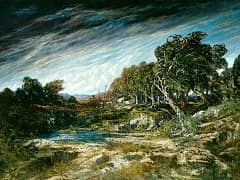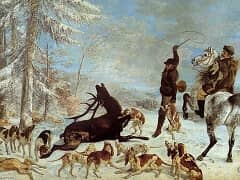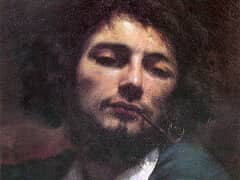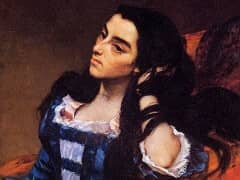Basket of Flowers, 1863 by Gustave Courbet

This magnificently painted bouquet forms a kind of pendant to the Flowers in a Basket in Glasgow, a work of almost exactly the same dimensions. Both were painted in the Saintonge, under the beneficient influence of the artist's patron and host Etienne Baudry. The gardens at Rochemont provided the artist with a whole range of flowers, unfamiliar in the Franche-Comte, to study and enjoy, and the hothouses enabled him to combine blossoms from different stages of the season, such as early magnolias and later-blooming daylilies. Such a profusion of models, together with his own powerful visual memory, would have enabled Courbet to combine flowers as he pleased. This type of grand floral painting did not depend, any more than it had in the Dutch tradition, on the transcription of a specific "arrangement." The question of a possible allegorial or symbolic intention in Courbet's Saintonge flower paintings cannot be answered in relation to the paintings of Bremen and Glasgow; but it is known that in two other small paintings he did, by inscribing a verse on the back of the canvas, the works enter the realm of symbolism. These two works, one of them a Still Life with Poppies and Skull, were made specifically for Baudry's friend Phoedora Gaudin. Gaudin was a local lawyer and Republican politician sufficiently activist to have been forced into political retirement by the Imperial government the very year of Courbet's visit to Saintes.
The artist would inevitably find such a figure sympathetic and would have gladly indulged his new friend's interest in the symbolism of flowers. As for Flowers, it is a painting whose sheer beauty - of touch, of color, of evocation of the vitality of these brilliant works of nature - requires no alternative or concurrent reading.















